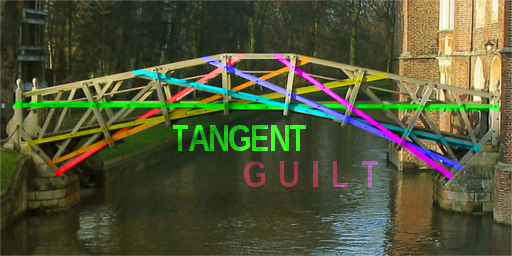No, this post is not about a new beverage option at Pop. It is about liturgical colours, and their potential significance.
Lent has just started. Which means it’s the end of ordinary time, and green has stopped adorning our church altars, being replaced by either purple or sackcloth. The question of liturgical colours is arcane, at best, to the outsider. I only recently found out that there were rules about them (in the Church of England). But where there are rules, there – generally – is meaning.

Background photo: Andrew Kelsall, reused under CC license
Let us look at purple first. Now, purple is also used in another season: Advent. A season of anticipation where we prepare both for Christmas (and the celebration of the birth of Jesus) and the Second Coming. Similarly, Lent is a period that leads up to Easter, in which we are preparing for both Good Friday and Easter Sunday. In this case, there is nothing to say that purple specifically symbolises anticipation – and it might as well be just another colour
Sackcloth, on the other hand, is only used at Lent. It is a bland colour compared to the other colours used throughout the year. It denotes simplicity, and a form of fasting. Therefore, in using sackcloth as the liturgical colour for Lent, we are insisting on the disciplines associated with the season itself, and on the 40 days Jesus spent in the wilderness.
Both choices of colour have their implications: one focuses on the ultimate conclusion of Lent, while the other one focuses on Lent itself. Through this, they are indicative of theological positions the incumbent wishes to take for this season: whether they wish to remind the congregation of their salvation that comes from the Cross (purple!) or wish to lead them, through penitence, to have contrite hearts (sackcloth!)*
It is a shame, really, that such a choice needs to be made. Because both elements complement each other fittingly, and actually make little to no sense independently of each other. If the disciplines we take on for Lent are seen as an attempt at self-sanctification, they are doomed to failure and actually not to be recommended. If they are seen as us submitting ourselves to temptation like Jesus did in the wilderness, then, again, we are being very pretentious to think that we can, in our own strength, resist temptation. Sackcloth alone makes no sense, because, knowing that Jesus is the one who brings us sanctification, any effort made independently makes no sense.
But purple alone makes no sense either. In Advent, the countdown to Christmas is more than that: it is also an expression of our anticipation of the Second Coming – a repeat of Christmas. But are we expecting a second Easter? If we were, we’d be saying that the sacrifice on the Cross would need to be repeated – which we obviously aren’t. So the anticipation part of Lent only makes sense if we are looking to Easter as the fulfillment, or the culmination, of what we do during Lent. The purple only makes sense of the sackcloth.
Over Lent, let us not forget this: that through our disciplines (if we follow any), we ought to be looking to Christ and to Easter; and that in looking to Easter, we ought to allow ourselves to be sanctified.
—
* Or the church does not have sackcloth vestments; or floral arrangements are easier to make with one colour; or the warden simply likes sackcloth better. Sometimes, I can read a bit too much into things…




